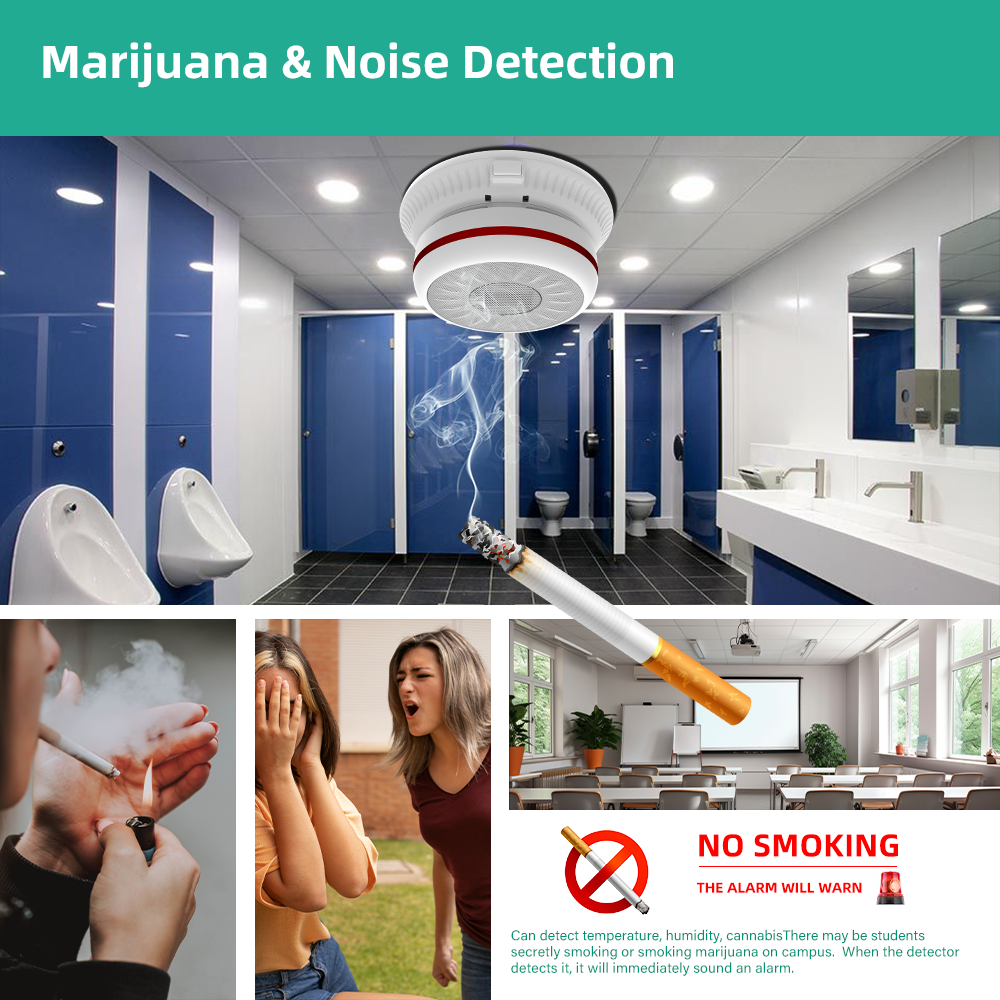In American schools today, a hidden epidemic unfolds every three minutes: a student is caught vaping. Public health professionals label the use of vaping by teens as a major epidemic. According to CDC there are more than 40% of highschool students and more than 80% of middle schoolers who have tried electronic cigarettes. Nearly all (99%) of these devices have nicotine, an addictive chemical which can alter brain development and acts as a gateway to smoking cigarettes. Parents, teachers and administrators feel a growing pressure to be more proactive. Vape detectors are an advanced technology that is rapidly becoming an essential part of every campus. Triton as well as 3D Sense, among the leading vape detectors in schools have more to offer than simply sound an alert.
How Vape Detectors are designed: They work with precision without intrusion
Modern vape smoke detectors like the Triton UTRA Smart Safety Sensor doesn’t rely on audio recordings or cameras, ensuring complete privacy while providing actionable intelligence. It is based on particulate sensors which evaluate the air in real-time. If vape aerosols, cigarettes smoke, marijuana vapor or masking agents (like heavy perfumes) appear the device sends immediate alerts by email or text to a designated team. False positives are incredibly low and give administrators the assurance that every notification needs immediate attention.

The expense of deployment can be reduced if one unit covers a whole room. Within five weeks of installation, Triton customers typically report significant reductions in vaping incidents. The reason? Data-driven deterrence. Triton Cloud Dashboard provides an “hotspot” of where vaping is taking place most often. Principals can then send security guards or hall monitors to where they are most needed.
Beyond Detection, Occupancy Visibility, and Loitering control
Triton differs from standard vape detectors thanks to its patent-pending occupancy visualisation system. Without capturing images or sound or recording sound, the ULTRA sensor measures the number of people and the time they spend in sensitive areas. Administrators can see heat maps containing colored codes that highlight the time when bathrooms turn into social hubs, prime locations to smoke, and prolonged contact that spreads respiratory diseases.
Stanford Medicine’s research underscores the importance of this issue Students who use vapes have a five-fold increased risk of contracting COVID-19. Vape detectors improve school’s air quality by reducing congregation. This reduces transmission risk of airborne pathogens. Following the outbreak, these devices have become indispensable due to their dual benefits.
Converting data into discipline and Dialogue
The numbers tell a compelling story. The Triton report module gathers quantitative evidence incident timestamps, frequencies, locations and other information that schools provide to school boards, parent groups even students. If a campus exhibits an increase of 60% in detections after the introduction of detectors, skepticism fades. Parents will notice that the students are involved; they are also aware of the consequences.
Teachers can make a greater impact by announcing the vape detector at the beginning of the day. For example, the 3D Sense model is marketed as a deterrent. “Let students know the air itself is watching,” guidance materials advise. The next step: The social cost caused by triggering alarms usually proves greater than the lecture.
A Multi-Front Strategy Schools Can’t Ignore
No single tool ends vaping however vape detectors form part of an entire approach
Monitoring – Real-time alerts spot instances that are currently in progress.
Education – Evidence-based studies are the main source of anti-vaping education.
Deterrence – Visible signage and other known consequences alter behavior.
Discipline – Hotspot data justifies targeted enforcement.
Support for Students – Schools use detection devices with support to help students struggling to quit smoking.
The CDC states that stopping the trend is a matter of “buy-in from parents, educators, and society.” Vape detectors supply the missing link: immediate, objective feedback that converts good intentions into measurable outcomes.
Simple Deployment
Triton Cloud Dashboard makes it easy to sign-up your devices. Administrators can add contacts, set alert thresholds and then customize notifications rules. A single demo reveals how intuitive the interface truly is. You can schedule a demo to view live hotspot maps, as well as historical graphs in real time.
Conclusion
Each puff left unnoticed can lead to dependence for a long time. Every bathroom that is not properly monitored poses a risk to both safety and health. Vape detectors for schools like Triton and 3D Sense offer more than surveillance they deliver intelligence, deterrence, and proof of progress. Schools that have them installed do not just react to the issue of vaping; they control it.
With just one sensor per space, privacy-safe insights into occupancy, and rapid-alert systems, these tools turn a few flimsy concerns into real-world victories. In an era when 40 percent of high schoolers have already tried it with middle-schoolers, and their numbers are growing every day, putting off the decision for longer makes sense. The air in your school carries evidence make sure you’re the first to be aware of what is being said.